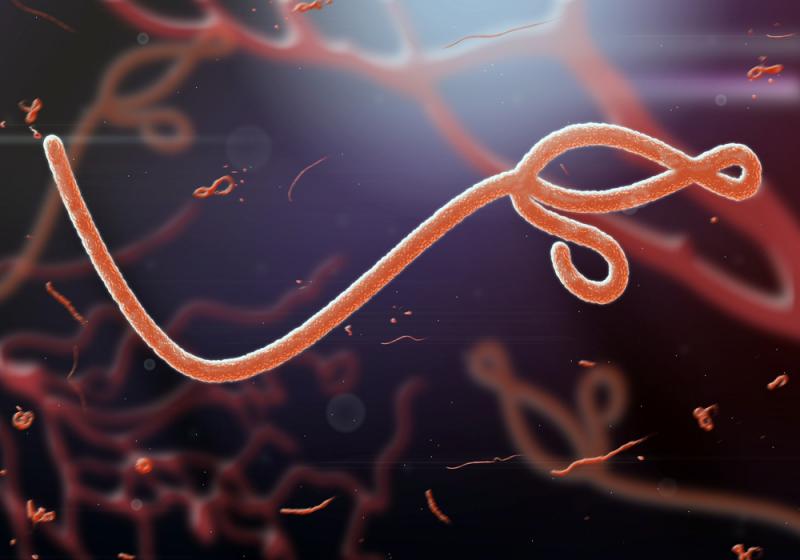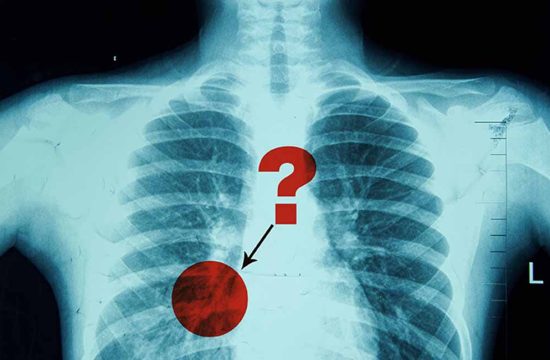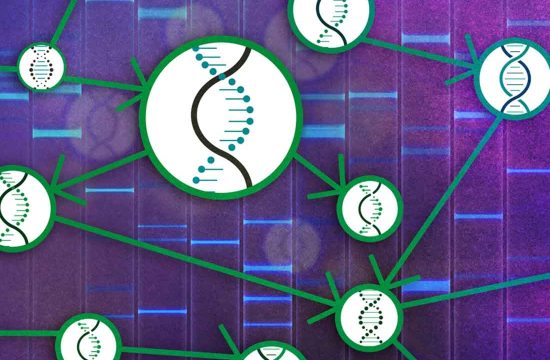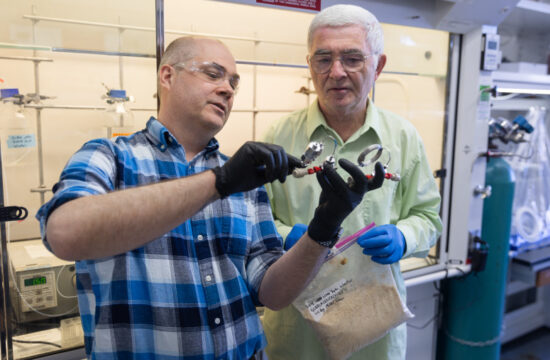 Scientists have identified potential biomarkers in nonhuman primates exposed to Ebola virus (EBOV) that appeared up to four days before the onset of fever, according to research published today in the journal Science Translational Medicine.
Scientists have identified potential biomarkers in nonhuman primates exposed to Ebola virus (EBOV) that appeared up to four days before the onset of fever, according to research published today in the journal Science Translational Medicine.
The work, a collaboration between the U.S. Army Medical Research Institute of Infectious Diseases (USAMRIID) and Boston University (BU), could pave the way for developing diagnostic tools to identify EBOV infection in humans even before symptoms appear. Such tools would be invaluable in limiting the spread of disease where there are cases of known potential exposure to the virus, according to USAMRIID investigator Sandra L. Bixler, Ph.D., the paper’s co-first author.
Bixler said previously developed animal models of EBOV infection have an acute disease course lasting only 7-10 days on average. This makes therapeutic intervention challenging, since the timeframe for administering treatment is very short. In addition, such models are based on high viral doses and are uniformly lethal, which does not reflect the variable and comparatively extended time to disease onset seen in humans.
“Those models make sense for testing vaccines and therapeutics,” Bixler commented. “But for human infection, they don’t really match what we see in the field–especially given what we’ve learned from the most recent Ebola virus disease outbreak in Western Africa.”
So Bixler and USAMRIID colleague Arthur J. Goff, Ph.D., decided to investigate alternative models that could still replicate human infection while extending the disease course. Instead of challenging the animals via injection, which is a standard laboratory model, they tested the intranasal route–which would be more likely to occur in a natural outbreak where people may be exposed to infected bodily fluids.
The team designed a study using a lower dose of EBOV in 12 cynomolgus macaques. The animals, exposed by intranasal infection and closely monitored for signs of disease, fell into four categories. Three succumbed to disease in the usual timeframe of 7-10 days following infection; four had a delayed onset of 10-15 days; three were late-onset (20-22 days); and two survived.
“We were then faced with the challenge of teasing apart any differences between acute versus delayed disease onset, and survivors versus non-survivors,” said Louis A. Altamura, Ph.D., one of the USAMRIID scientists who performed gene expression profiling to monitor the host response via changes in RNA transcripts over time. Thanks to a long-standing collaboration between USAMRIID and BU, investigators at USAMRIID’s Center for Genome Sciences, along with BU scientists John H. Connor, Ph.D., and Emily Speranza, Ph.D., performed further genomic data analysis and began to look for early markers of infection.
What they found–in all the animals except the two survivors–were interferon-stimulating genes that appear prior to infection with Ebola virus. Importantly, the genes can be detected four days before the onset of fever, which is one of the earliest clinical signs of EBOV exposure. When Speranza compared the results to humans, using Ebola patient blood samples from the most recent outbreak, she found the same pattern.
“This demonstrates that lethal Ebola virus disease has a uniform and predictable response to infection, regardless of the time to onset,” commented Gustavo Palacios, Ph.D., who directs USAMRIID’s Center for Genome Sciences. “Furthermore, expression of a subset of genes could predict disease development prior to other host-based indications of infection, such as fever.”
EBOV causes severe hemorrhagic fever in humans and nonhuman primates with high mortality rates and continues to emerge in new geographic locations, including Western Africa, the site of the largest recorded outbreak to date. More than 28,000 confirmed, probable and suspected cases have been reported in Guinea, Liberia and Sierra Leone, with more than 11,000 reported deaths, according to the World Health Organization (WHO). Today, WHO estimates that there are over 10,000 survivors of Ebola virus disease.
Research on Ebola virus is conducted under Biosafety Level 4, or maximum containment conditions, where investigators wear positive-pressure “space suits” and breathe filtered air as they work. USAMRIID is the only laboratory in the Department of Defense with Biosafety Level 4 capability, and its research benefits both military personnel and civilians.
Source: dddmag







